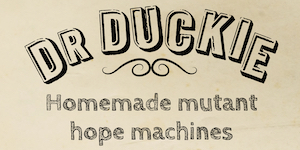 My article on John Cameron Mitchell’s Hedwig and the Angry Inch, for the Endings column of the April 2020 issue of Sight & Sound. Posted with permission.
My article on John Cameron Mitchell’s Hedwig and the Angry Inch, for the Endings column of the April 2020 issue of Sight & Sound. Posted with permission.
It can be hard to be in between and it can be supple. You might be pulverised and you might be quicksilver. Hedwig and the Angry Inch (2001) is a deeply liminal work, a film that straddles, dances around and stumbles against and across thresholds of many kinds – personal, formal, industrial, world-historical. It sings the glory of fluidity and change, predominantly in modes of barbed and exuberant agency, charting the labour pains of a flailing yet defiant self struggling toward affirmation in a world of cruelty and failure. It’s fierce and sure and on a mission. And then, in its closing moments, as its lead stumbles naked down an alleyway, away from the camera, reborn into mystery, it opens itself up to the tender terror of mere uncharted possibility.
Hedwig had unusual origins. In the mid-1990s, writer-director-performer John Cameron Mitchell, who had a background in theatre, worked with musician Stephen Trask to develop and showcase the character and story of Hedwig in bars and clubs on New York’s downtown queer scene. These appearances developed into a rock musical that Cameron himself adapted into a movie. The story’s main character (Mitchell) grows up in East Berlin as Hansel, falls in love with an American soldier, is pressured into a botched sex change, gets married, moves to the US and is dumped, in a trailer park, on the eve of the fall of the Berlin Wall. A romance with teenager Tommy (Michael Pitt) leads to a passionate musical collaboration; after a bitter split, Hedwig, now a punk-glam sacred monster demanding recognition and redemption, trails Tommy across the country, band in tow, playing crummy family restaurants near the stadiums where her ex excels. Identities, relationships and hierarchies slip and flip all over. This fits Hedwig’s historical moment of radical geopolitical uncertainty, after the crumbling of Cold War binaries and before the toxic othering of the war on terror.
It’s a work, then, of strange transgressions and contingencies. For Hedwig, gender is a malleable technology of self-fashioning and social navigation. For Mitchell, the project was a vehicle for expressive self-exploration outside the mainstream. As a feature production (backed by Killer Films), Hedwig benefited from an industrial moment amenable to both queer experiment and independent filmmaking. And as a text, it swerves straightforward conventions of genre, tone and form – not least in its ending.
The film’s last act is a 20-minute fantasia or fugue in which narrative, dialogue and indeed drag fall away in a tumult of blurred personae, released resentments and dawning realisations. A frenetic gig fragments into fractured flashbacks, Hedwig sheds her wig and dress and, in a space outside story, faces Tommy, makes amends with the band and finally drifts out alone into the night, letting go of the driving hunger for external validation and vengeance to find a kind of peace.
Hedwig’s final shot lasts a minute and a half and follows the character as they walk, naked and gingerly, down a wet, harshly lit Lower Manhattan alleyway toward the street. There’s a new register of both calm and welcomed vulnerability on Mitchell’s face, a sense that this is no longer Hansel or Hedwig but a new self being born. The camera cranes up as they walk away, long shadow lingering, teetering to lean against a wall for support, walking through a puddle then pausing as the alley meets the street. One of the film’s original songs, ‘The Origin of Love’, starts to play, mythically evoking a time when humans were whole and happy and there was no need for love. As Mitchell crosses the street, people walk past, going about their business. No one even looks. It’s New York, after all. Mitchell reaches the far sidewalk and the top of the frame, unclothed in any way, unencumbered by the gaze of others, unaware of what the future might bring, and they’re gone. People keep walking. The song keeps playing. The credits roll.
A story about desperate, passionate and often harmful projects of self-realisation and self-determination ends with a quiet un-becoming and an implicit faith in the kindness of strangers and perhaps the kindness of strangeness too. Here is a way of understanding Hedwig’s queer value. It’s a work with a deep investment in things that aren’t fixed, and in the impossible challenge of finding both pride and love in a wicked world.

